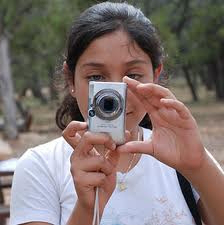
May May Leung, PhD, RD is an assistant professor at the CUNY School of Public Health at Hunter College.
 Have you ever heard of a community-based participatory method called photovoice? Researchers and community practitioners alike have used this method to empower people and conduct needs assessments for different communities and a variety of public health issues, such as tobacco policy and homelessness.
Have you ever heard of a community-based participatory method called photovoice? Researchers and community practitioners alike have used this method to empower people and conduct needs assessments for different communities and a variety of public health issues, such as tobacco policy and homelessness.
Photovoice entrusts cameras into the hands of community members, who often do not have a voice, to “enable them to act as recorders and potential catalysts for change, in their own communities.” It has three main goals, which include: 1) Enabling people to record and reflect their community’s strengths and concerns, 2) Promoting critical dialogue and knowledge about important issues through large and small group discussion of photographs, and 3) Reaching policymakers.
I was fortunate enough to have conducted a photovoice project myself in Beijing, China a few years ago where I worked with 12 boys and girls from migrant families to better understand how they viewed their nutrition and physical activity environment in the city after having recently moved from a rural province. Similar to other countries, migrants in China tend to lead very different lives from their middle-class neighbors as they often have restricted access to job opportunities, social services, and education.
In our project, disposable film cameras were distributed to the participants and they were asked to take photos of what they thought were environmental barriers and facilitators related to diet and fitness. Some of the children had never used cameras. Not only did they learn how to take pictures, but also how to express their thoughts through the lens of a camera. The photos provided a unique platform to promote critical group discussions.
Photovoice gives researchers and health professionals “the possibility of perceiving the world from the viewpoint of…people who lead lives that are different from those … in control of the means for imaging the world”. The images that are taken allows some of the most vulnerable populations to voice their concerns and for researchers to understand the “real local needs” with the goal of ultimately working together to provide the greatest positive impact in the community.
May May Leung, PhD, RD









Kathleen Hoffman, PhD / February 6, 2012
Great post…I think Photovoice is a terrific tool! Thanks for sharing!
/
Pingback: Why The “Soda Cap” Was Blocked, And How PhotoVoice Can Help | food: digested / March 15, 2013
/
Pingback: Celebrating Youth Food Justice in East Harlem and the South Bronx! | HealthCetera - CHMP's Blog / August 30, 2013
/